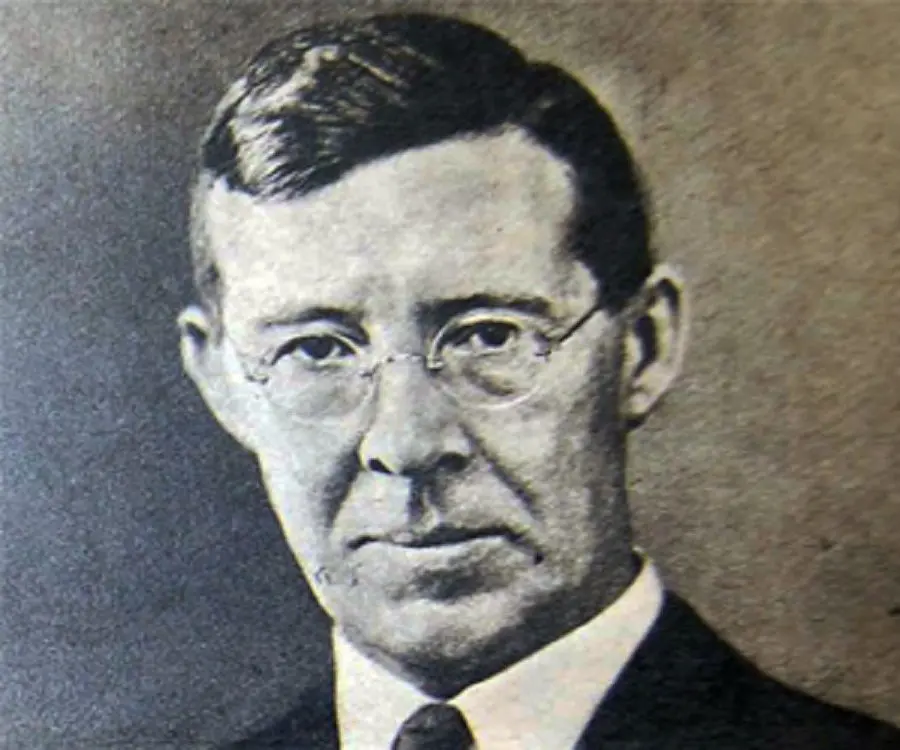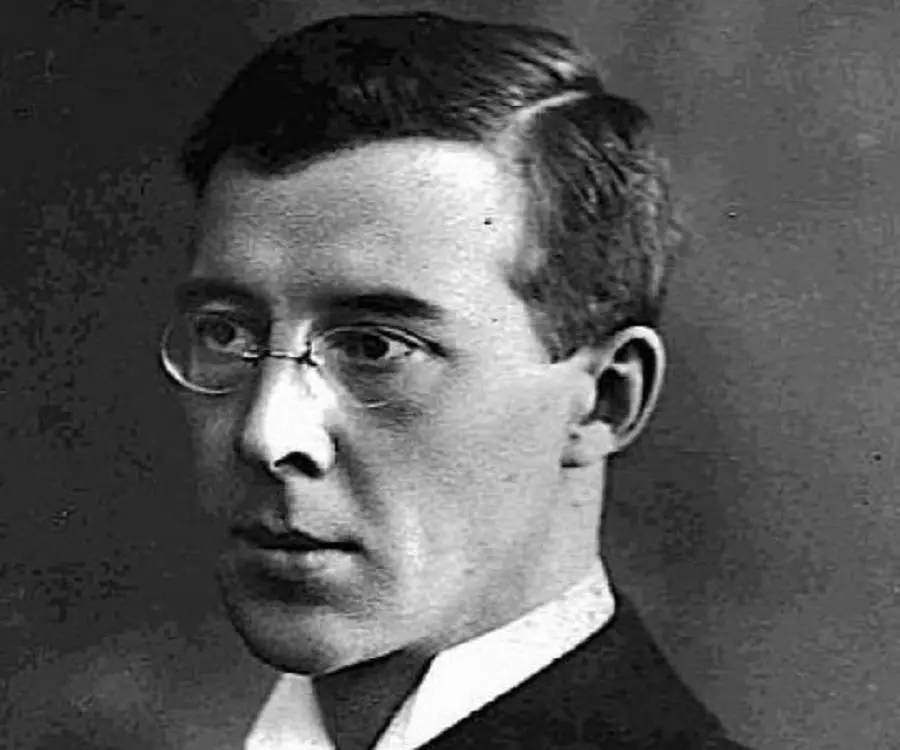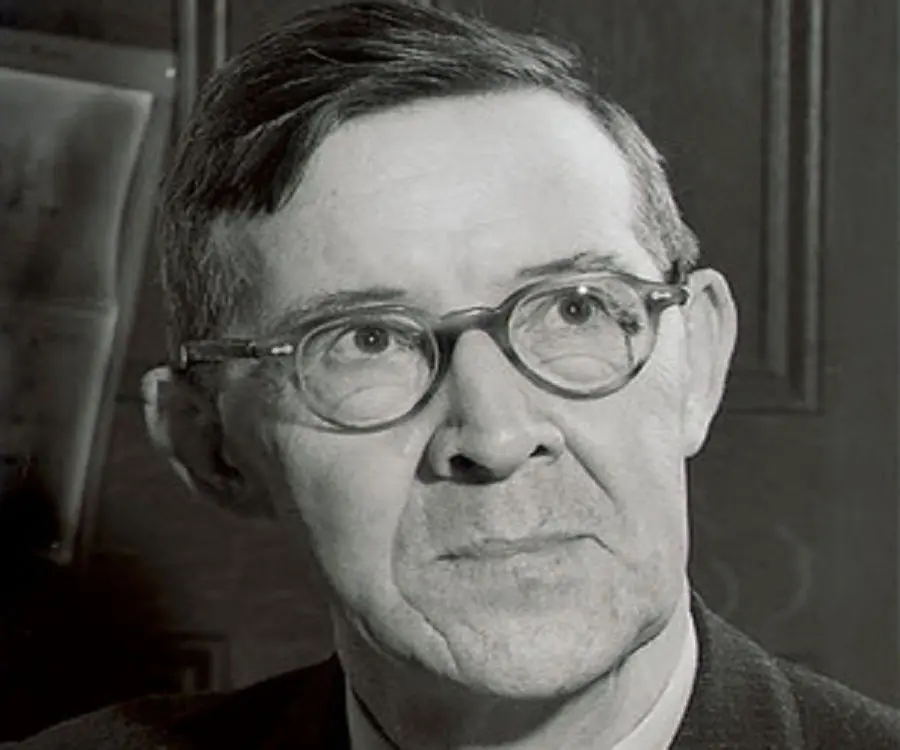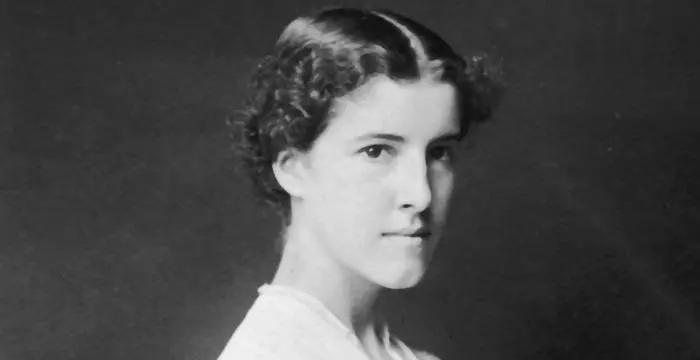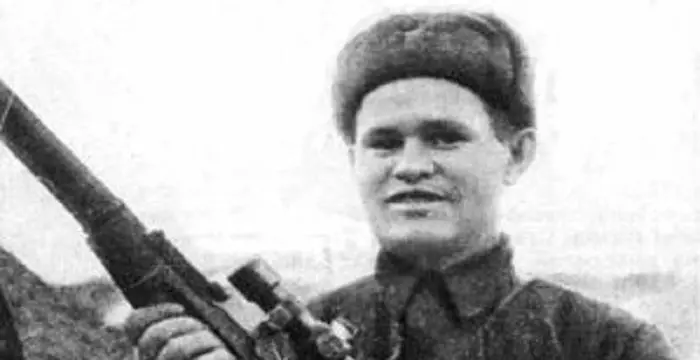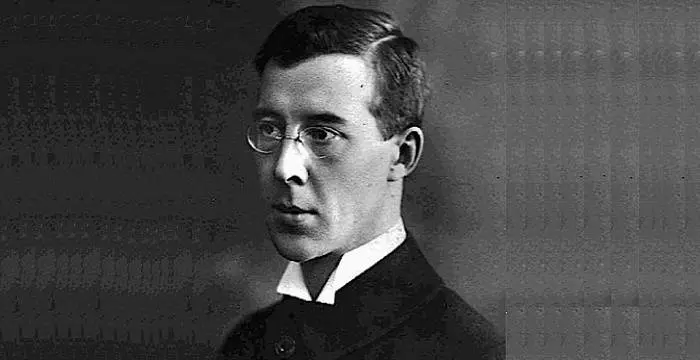
Pitirim Sorokin - Sociologists, Birthday and Life
Pitirim Sorokin's Personal Details
Pitirim Sorokin was a Russian-American sociologist, professor, political activist, and a noted anti-communist advocate.
| Information | Detail |
|---|---|
| Birthday | January 21, 1889 |
| Died on | February 10, 1968 |
| Nationality | Russian, American |
| Famous | Intellectuals & Academics, Sociologists |
| Spouses | Elena Petrovna Sorokina (née Baratynskaya) |
| Known as | Pitirim Alexandrovich Sorokin |
| Childrens | Peter P. Sorokin, Sergei Porokin |
| Universities |
|
| Birth Place | Knyazhpogostsky District |
| Born Country | Russia |
| Gender | Male |
| Father | Aleksandr Sorokin |
| Mother | Pelageya Sorokina |
| Sun Sign | Aquarius |
| Born in | Knyazhpogostsky District |
| Famous as | Sociologist |
| Died at Age | 79 |
// Famous Intellectuals & Academics
Bertil Gotthard Ohlin
Bertil Gotthard Ohlin was a famous Swedish economist. This biography profiles his childhood, family life & achievements.
Emily Greene Balch
Emily Greene Balch was an American economist, sociologist and pacifist who won the 1946 Nobel Peace Prize. This biography of Emily Greene Balch provides detailed information about her childhood, life, achievements, works & timeline.
Martin Buber
One of the greatest philosophers to have ever walked on earth, Martin Buber contributions to philosophy is a long-standing one. Explore all about his profile, childhood, life and timeline here.
Pitirim Sorokin's photo
Who is Pitirim Sorokin?
Pitirim Sorokin was a Russian-American sociologist, professor, political activist, and a noted anti-communist advocate. Born into the Komi peasantry in Russia, Sorokin displayed an early affinity for political activism. He was involved with organized resistance initiatives against the czar at the age of 14. However, his relationship with both the monarchy and the Bolsheviks (led by Lenin) grew strained, and after several arrests, he was exiled. As a result, he moved to the United States with his family, working as a professor at several universities, producing an unusual volume of academic writing and developing his pioneering work on social cycles. He was eventually invited to lay the foundations of Harvard University’s sociology department (where he developed a famously fractious relationship with his colleague and noted American sociologist, Talcott Parsons) and elected the president of the ‘International Institute of Sociology’ and the ‘American Sociological Association.’ One his sons became a renowned physicist in his own right.
// Famous Sociologists
Emily Greene Balch
Emily Greene Balch was an American economist, sociologist and pacifist who won the 1946 Nobel Peace Prize. This biography of Emily Greene Balch provides detailed information about her childhood, life, achievements, works & timeline.
Karl Marx
Karl Marx was a Prussian-German philosopher, revolutionary, historian and socialist whose communist ideologies and works laid the foundation for ‘Marxism’. Explore this biography to learn more about his childhood, life achievements, works & timeline.
Charlotte Perkins Gilman
Charlotte Perkins Gilman was a famous American feminist, sociologist and novelist. Go through this biography to learn more about her profile, childhood, life and timeline.
Childhood & Early Life
Pitirim Alexandrovich Sorokin was born to peasant parents in Turya (a village in Yarensk uyezd, Vologda Governate of the erstwhile Russian empire) on February 2, 1889. His father, Alexander, was a craftsman specializing in gold and silver work. He had two brothers– Vasily (older) and Prokopy (younger).
His mother died in 1894, leaving Alexander to travel from village to village looking for work as an artisan, with the infant Pitirim and his brother Vasily in tow. In the meantime, Prokopy lived with an aunt. Due to their father’s alcoholic tendencies and abusive behavior, the two brothers were forced to strike out on their own and fend for themselves when Pitirim was eleven.
He was able to support himself by working as a clerk and an artisan and eventually, a series of competitive scholarships allowed him to attend ‘Saint Petersburg Imperial University,’ where he earned a graduate degree in criminology and became a professor.
Sorokin was deeply influenced by Pavlov and his contemporaries during his time at the University of St. Petersburg and the Psycho-Neurological Institute. After exploring ethics, psychology, history, and law (among others), he eventually explored sociology through his work in criminology.
Career
While rising through the ranks of Russian academia, Sorokin got deeply involved in non-communist circles. During the landmark ‘Russian Revolution’ of 1917, he was part of the ‘Socialist Revolutionary Party’ and later supported the ‘White Movement’ (which aggregated all non-communist forces in Russia and fought the ‘Bolsheviks’ or the ‘Reds’ in the ‘Russian Civil War’). He also became personal secretary to Prime Minister (and leader of the Russian Constituent Assembly) Alexander Kerensky. Sorokin was appointed editor-in-chief of the government daily ‘The Will of the People’ during this period.
He continued to be a vocal critic of the communist agenda in Russia, getting arrested at least six times. He was sentenced to death during one of his prison confinements, but was released after six weeks–only by the personal intervention of Lenin himself who had high hopes of converting him to the communist cause.
He returned to the University of St. Petersburg, where he became one of the founding members of the sociology department. However, he was arrested again in 1922 and exiled by the Lenin government.
In 1924, before he became well-known in American academic circles, he published ‘Leaves of a Russian Diary’ (1924), a memoir that provided in-depth insights into the unraveling of the Russian monarchy and the subsequent rise of the ‘Bolsheviks.’ Years later, in 1950, he added an addendum to the book named ‘The Thirty Years After.’
After spending a stateless year in Europe, he was able to migrate to the USA where he was offered a job at the F. Stuart Chapin’s sociology department at the University of Minnesota, where he taught until 1930. Sorokin focused primarily on rural sociology, training some of America’s foremost experts in the field (including Conrad Taeuber and C.A. Anderson).
He produced some of his best-known works during this period in Minnesota – writing six books in six years – four of these went on to redefine sociology in America and beyond, especially ‘Social Mobility’ (1927).
Sorokin’s pioneering work attracted the attention of the then president of the Harvard University, Abbott Lawrence Lowell, who personally invited him to establish a new department of sociology at the school to replace its department of social ethics. Noted sociology scholar Jessie Bernard later remarked that this appointment brought “academic respectability” to sociologists in the US.
He continued to work at Harvard for the next three decades, putting the university on the sociological map and developing a dynamic brand of sociology that continues to define the field today. His most significant work– the four-volume ‘Social and Cultural Dynamics’ (1937-41) was produced during this stint at Harvard and spanned 2500 years of human existence. Sorokin was particularly interested in interrogating the principles of social change as well as conflict.
Later, he grew interested in altruism and established the ‘Harvard Center for Creative Altruism’ in 1949. His work researching the lives of Christian saints and living US altruists often attracted ridicule and gave him a reputation as a “ludicrous eccentric.”
Despite being ignored by fellow sociologists during the 1940s and the 1960s, he eventually gained mainstream support, especially with the Bedminister Press republication of ‘Social and Cultural Dynamics’ (1962) and the 1963 tributes by Philip J. Allen (‘Pitirim Sorokin In Review’) and Edward A. Tiryakian (‘Sociological Theory, Values and Sociocultural Change’).
In 1963, due to overwhelming public support, he was elected the ‘President of the American Sociological Association’ with the largest margin and the first successful write-in vote in the history of the organization. His biography ‘A Long Journey’ was published in the same year.
Major Works
Sorokin’s most notable works include his early work at the University of Minnesota, including but not limited to 'Social Mobility’ (1927), ‘Contemporary Sociological Theories’ (1928), and ‘Principles of Rural-Urban Sociology’ (1929).
His four-volume ‘Social and Cultural Dynamics’ (1937–1941) is often considered his magnum opus.
‘The Ways and Power of Love’ (1954) expounds on his theory about five-dimensional love.
Awards & Achievements
He first became president of the ‘International Institute of Sociology’ in 1936, and later elected as the ‘President of the American Sociological Association’ in 1963, after a landmark vote.
Personal Life
Sorokin got married to Elena Baratynskaya in 1917, and she spent a year in Prague with her, before moving to the US. The couple had two children–Peter, a physicist and laser pioneer (born in 1931) and Sergei (born in 1933).
He became a naturalized American citizen in 1930.
He died in Winchester, Massachusetts, on February 10, 1968 at the age of 79.
Trivia
He became co-editor of ‘New Ideas in Sociology’, a Russian journal, at the age of 24.
Having spent time in prisons run by both the monarchy and the communist government, he reportedly preferred the monarchy’s prisons due to their superior cleanliness, kindlier behavior and availability of books.
Sorokin once called communism “the pest of man”. His disdain was reciprocated–Lenin called him “typical of the most implacable part of the Russian intelligentsia”.
He wrote a total of 37 books (at least 7 of which were in Russian) and over 400 articles.
// Famous Russian peoples
Vasily Zaytsev
Vasily Zatysev was a Russian sniper who served during the World War II. Check out this biography to know about his childhood, family life, achievements and fun facts about him.
Zyzz (Aziz Shavershian)
Zyzz (Aziz Shavershian) was a popular Australian Body Builder and internet personality. Check out this biography to know about his childhood, family life, achievements and other facts about his life.
Kristina Pimenova
Read this bio to gather several facts, trivia and many details related to the personal and family life of Kristina Pimenova.
Pitirim Sorokin biography timelines
- // 2nd Feb 1889Pitirim Alexandrovich Sorokin was born to peasant parents in Turya (a village in Yarensk uyezd, Vologda Governate of the erstwhile Russian empire) on February 2, 1889. His father, Alexander, was a craftsman specializing in gold and silver work. He had two brothers– Vasily (older) and Prokopy (younger).
- // 1894His mother died in 1894, leaving Alexander to travel from village to village looking for work as an artisan, with the infant Pitirim and his brother Vasily in tow. In the meantime, Prokopy lived with an aunt. Due to their father’s alcoholic tendencies and abusive behavior, the two brothers were forced to strike out on their own and fend for themselves when Pitirim was eleven.
- // 1917While rising through the ranks of Russian academia, Sorokin got deeply involved in non-communist circles. During the landmark ‘Russian Revolution’ of 1917, he was part of the ‘Socialist Revolutionary Party’ and later supported the ‘White Movement’ (which aggregated all non-communist forces in Russia and fought the ‘Bolsheviks’ or the ‘Reds’ in the ‘Russian Civil War’). He also became personal secretary to Prime Minister (and leader of the Russian Constituent Assembly) Alexander Kerensky. Sorokin was appointed editor-in-chief of the government daily ‘The Will of the People’ during this period.
- // 1922He returned to the University of St. Petersburg, where he became one of the founding members of the sociology department. However, he was arrested again in 1922 and exiled by the Lenin government.
- // 1927He produced some of his best-known works during this period in Minnesota – writing six books in six years – four of these went on to redefine sociology in America and beyond, especially ‘Social Mobility’ (1927).
- // 1930After spending a stateless year in Europe, he was able to migrate to the USA where he was offered a job at the F. Stuart Chapin’s sociology department at the University of Minnesota, where he taught until 1930. Sorokin focused primarily on rural sociology, training some of America’s foremost experts in the field (including Conrad Taeuber and C.A. Anderson).
- // 1930He became a naturalized American citizen in 1930.
- // 1936 To 1963He first became president of the ‘International Institute of Sociology’ in 1936, and later elected as the ‘President of the American Sociological Association’ in 1963, after a landmark vote.
- // 1937He continued to work at Harvard for the next three decades, putting the university on the sociological map and developing a dynamic brand of sociology that continues to define the field today. His most significant work– the four-volume ‘Social and Cultural Dynamics’ (1937-41) was produced during this stint at Harvard and spanned 2500 years of human existence. Sorokin was particularly interested in interrogating the principles of social change as well as conflict.
- // 1937 To 1941His four-volume ‘Social and Cultural Dynamics’ (1937–1941) is often considered his magnum opus.
- // 1949Later, he grew interested in altruism and established the ‘Harvard Center for Creative Altruism’ in 1949. His work researching the lives of Christian saints and living US altruists often attracted ridicule and gave him a reputation as a “ludicrous eccentric.”
- // 1954‘The Ways and Power of Love’ (1954) expounds on his theory about five-dimensional love.
- // 1962 To 1963Despite being ignored by fellow sociologists during the 1940s and the 1960s, he eventually gained mainstream support, especially with the Bedminister Press republication of ‘Social and Cultural Dynamics’ (1962) and the 1963 tributes by Philip J. Allen (‘Pitirim Sorokin In Review’) and Edward A. Tiryakian (‘Sociological Theory, Values and Sociocultural Change’).
- // 1963In 1963, due to overwhelming public support, he was elected the ‘President of the American Sociological Association’ with the largest margin and the first successful write-in vote in the history of the organization. His biography ‘A Long Journey’ was published in the same year.
- // 10th Feb 1968He died in Winchester, Massachusetts, on February 10, 1968 at the age of 79.
// Famous Aquarius Celebrities peoples
Jessii Vee
Check out all that you wanted to know about Jessii Vee, the famous Canadian Vlogger & YouTube Personality; her birthday, her family and personal life, her boyfriends, fun trivia facts and more.
Luara Fonseca
Luara Fonseca, known on the web as “luaraff,” is a musical.ly star. Check out this biography to know about her childhood, family life, achievements and fun facts about her.
Shane Blanchard
Shane Blanchard is an American TV actor. Let’s take a look at his family and personal life including age, birthday, net worth, family life and some fun facts.
Nora Fatehi
Nora Fatehi is a dancer, model, and actress of Indo–Arabic descent. This biography profiles her childhood, family, personal life, etc.
Soni Nicole Bringas
Soni Nicole Bringas is an American dancer and actress. Let’s have a look at her family and personal life including age. Date of birth, boyfriends, net worth, and fun facts.
Davis Cleveland
Davis Cleveland is an American actor. Let’s have a look at his family & personal life including age, net worth, and fun facts.
Pitirim Sorokin's FAQ
What is Pitirim Sorokin birthday?
Pitirim Sorokin was born at 1889-01-21
When was Pitirim Sorokin died?
Pitirim Sorokin was died at 1968-02-10
Where was Pitirim Sorokin died?
Pitirim Sorokin was died in Winchester, Massachusetts
Which age was Pitirim Sorokin died?
Pitirim Sorokin was died at age 79
Where is Pitirim Sorokin's birth place?
Pitirim Sorokin was born in Knyazhpogostsky District
What is Pitirim Sorokin nationalities?
Pitirim Sorokin's nationalities is Russian, American
Who is Pitirim Sorokin spouses?
Pitirim Sorokin's spouses is Elena Petrovna Sorokina (née Baratynskaya)
Who is Pitirim Sorokin childrens?
Pitirim Sorokin's childrens is Peter P. Sorokin, Sergei Porokin
What was Pitirim Sorokin universities?
Pitirim Sorokin studied at Saint Petersburg State University
Who is Pitirim Sorokin's father?
Pitirim Sorokin's father is Aleksandr Sorokin
Who is Pitirim Sorokin's mother?
Pitirim Sorokin's mother is Pelageya Sorokina
What is Pitirim Sorokin's sun sign?
Pitirim Sorokin is Aquarius
How famous is Pitirim Sorokin?
Pitirim Sorokin is famouse as Sociologist



